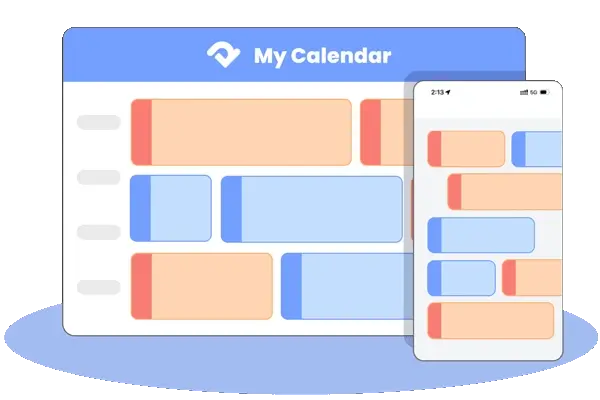Imagine a guest confronts you after booking a $220 room via an OTA—only to see your website list the same room for $195. This frustration is why hotel rate parity exists: it’s a practice that keeps room prices consistent across all booking channels, ensuring fairness for guests and smooth operations for your business.
At its core, rate parity means your hotel’s rates stay the same whether booked directly (website, phone, loyalty programs) or via third parties (OTAs like Booking.com, metasearch engines, travel agents). For example, a $180 standard room will appear at that price on every channel—no discounts on one platform and higher rates on another. This consistency removes guest confusion and simplifies price management.
The two main types of hotel rate parity
Rate parity has two key forms, shaped by regulation and flexibility:
Wide rate parity
The stricter option: you agree not to offer lower rates on any channel, including direct ones. If you list a $200 room on Expedia, you can’t charge $190 for the same room on your website or via phone. OTAs favor this to protect their 15-25% commissions—if hotels undercut them directly, guests would skip OTAs. For small hotels relying on OTA reach, it’s a trade-off, but it limits promotions (e.g., no “website-only” discounts without matching OTAs).
Narrow rate parity
More flexible, thanks to EU regulations (like European Court of Justice rulings against strict OTA clauses). You can’t advertise lower rates on public online channels (website, OTAs), but you can offer them via offline/limited direct channels: loyalty member emails, phone bookings, or in-person reservations. A mountain hotel might send loyalty guests a $15 phone-booking discount—no public listing needed. This lets you boost direct bookings without alienating OTAs.
The Advantages and Disadvantages of Rate Parity
Hotel rate parity is a double-edged sword for hoteliers. While it offers several benefits, it also comes with notable drawbacks.
Advantages of Rate Parity
- Simplifies Revenue Management
Hotels don’t need complex, channel-specific pricing strategies. A single, consistent price reduces manual work and minimizes human error. - Streamlines Inventory Control
Managing room availability becomes easier when prices are uniform across all channels. - Builds Guest Trust and Brand Reliability
Consistent pricing reassures guests that they are getting a fair deal. When customers know they don’t need to search for better prices, they are more likely to book directly.
Disadvantages of Rate Parity
- Limits Direct Booking Incentives
Hotels cannot use lower prices on their own website to attract direct bookings. This removes a powerful marketing tool and forces reliance on OTAs. - High OTA Commissions Reduce Profitability
OTA commissions can be as high as 25% or more, significantly cutting into a hotel’s profits. Hotels remain dependent on OTAs for visibility but at a steep cost. - Risk of OTA Pricing Manipulation
Even when hotels maintain parity, OTAs may offer promotions or adjust commissions to show lower prices.
This creates rate disparity, making the hotel’s direct website appear more expensive and damaging guest trust.
Legal Challenges and Global Rules
The strict nature of wide rate parity clauses has not gone unchallenged. In recent years, antitrust regulators and governments in many countries, particularly in Europe, have scrutinized these agreements. They argued that these clauses stifle competition and are anti-consumer, as they prevent hotels from offering a better deal to customers who book directly. As a result of these legal actions and investigations, many countries have banned or severely restricted wide parity agreements.
| Region | Current Regulation Status |
|---|---|
| Europe (France, Germany, Austria, etc.) | Wide parity is banned; narrow parity is restricted or prohibited in many countries. The EU Digital Markets Act (DMA) limits parity clauses for large platforms. |
| United Kingdom | No complete ban; narrow parity allowed, such as loyalty program offers, but wide parity is not supported. |
| Australia | Wide parity is banned; narrow parity is permitted under specific conditions. |
| United States | No federal ban; regulators like the FTC monitor algorithmic pricing and anti-competitive practices. |
| Canada (Ontario) | Currently focused on drip pricing and transparency issues; no formal investigation into parity clauses reported. |
| Asia (selected regions) | No significant restrictions; parity clauses remain largely unregulated in most markets. |
How Hotels Can Win the Direct Booking
With rate parity rules limiting price cuts, hotels need smarter ways to get guests booking directly on their websites. Just lowering prices isn’t an option anymore—but these powerful alternatives deliver results:
1. Offer Exclusive Website-Only Packages
- Create irresistible bundles:
• “Romance Package” (champagne + late checkout)
• “Family Fun Package” (local attraction tickets included) - Why it works: Guests get unique value they can’t find on OTAs, making direct booking the clear choice.
2. Build a Loyalty Program That Rewards Direct Bookings
- Member-only perks drive loyalty:
• Free breakfast
• Complimentary room upgrades
• Exclusive member discounts - Why it works: When guests feel valued and recognized, they bypass third-party sites to book directly with you.
3. Optimize Your Website for a Frictionless Experience
- Eliminate booking barriers:
• Streamlined 3-step booking process
• High-quality, honest room photos
• Detailed, transparent room descriptions
• Fully mobile-responsive design - Why it works: Guests who find information quickly and book effortlessly won’t waste time on OTAs.
Wrapping up
Rate parity evolves with regulation—from strict wide parity to flexible narrow models. Success means balancing guest needs (fair prices) with your goals (more direct bookings). Use perks, loyalty rewards, and tools to turn parity into a strength. At its core, parity is about trust: keep guests and OTAs confident, and you’ll focus on what matters most—great service.

